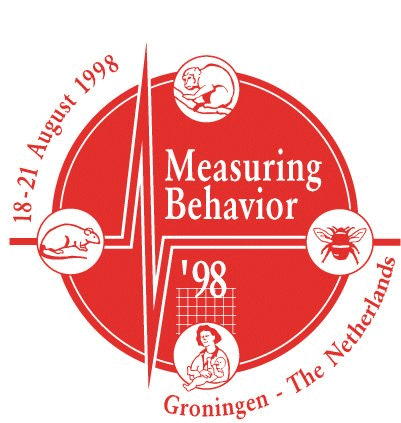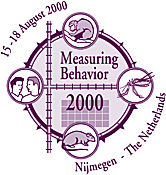|
Measuring Behavior is a biennial conference centered around
methods and techniques in behavioral research. While most conferences
focus on a specific scientific area, Measuring Behavior tries
to create bridges between disciplines by bringing together people who
may otherwise be unlikely to meet each other. At a Meauring Behavior
meeting, you will find yourself among ethologists, behavioral ecologists,
behavioral neuroscientists, developmental, social and work psychologists,
ergonomists, human factors researchers, movement scientists, psychiatrists,
linguists, psychophysiologists, toxicologists, usability testers, and
others! While the research questions and applications may be highly
diverse, The first meeting, Measuring Behavior ’96, was the spin-off of the international Eureka project "Automatic Recording and Analysis of Behavior". The plan to share the results of our project with colleagues quickly evolved into an international event. Organized by Noldus Information Technology and hosted by the Rudolf Magnus Institute for Neurosciences in Utrecht, The Netherlands, Measuring Behavior ’96 attracted 153 participants from 25 countries. The 2-day program included 70 presentations and 4 scientific tours. Menno Kruk wrote a report of the meeting, which was published in Trends in Neurosciences (vol. 20, pp. 187-189, 1997). The second conference, Measuring Behavior
'98, brought more than 275 delegates from 32 countries together
at the campus of the University of Groningen in Haren. In the year 2000 Measuring Behavior was held in Nijmegen. The third
meeting attracted an even bigger group of researchers from around
the world. Measuring Behavior 2002 at the Vrije Universiteit Amsterdam was the fourth conference. The very positive way in which the Measuring Behavior conferences have been received so far indicates that the meeting has found a niche in the crowded annual conference calendar. As far as we are concerned, it's here to stay! Last updated: 1 December 2002 |
 what all delegates share is an interest in methods, techniques and tools
for the study of behavior. Experience tells us that the focus on methodological
and technical themes can lead to a very productive cross-fertilization
between research fields.
what all delegates share is an interest in methods, techniques and tools
for the study of behavior. Experience tells us that the focus on methodological
and technical themes can lead to a very productive cross-fertilization
between research fields. During three full conference days, there were 140 presentations grouped
in 14 thematic symposia. More than in 1996, the scientific program was
well-balanced between human and animal research. There was also more
time for posters and demonstrations of software or equipment by participants.
The scientific tours, technical training sessions and user meetings,
all of which were highly rated program elements in 1996, were further
expanded. In 1998 we had six lab tours, 20 setups for ongoing technical
training, and two companies organized user meetings. New on the program
was a ‘video digitization service’ which allowed delegates to take a
look in the world of digital video. Finally, some 20 companies exhibited
scientific books, instruments and software. A selection of the presentations
will be published as full papers in the journal Behavior Research
Methods, Instruments & Computers.
During three full conference days, there were 140 presentations grouped
in 14 thematic symposia. More than in 1996, the scientific program was
well-balanced between human and animal research. There was also more
time for posters and demonstrations of software or equipment by participants.
The scientific tours, technical training sessions and user meetings,
all of which were highly rated program elements in 1996, were further
expanded. In 1998 we had six lab tours, 20 setups for ongoing technical
training, and two companies organized user meetings. New on the program
was a ‘video digitization service’ which allowed delegates to take a
look in the world of digital video. Finally, some 20 companies exhibited
scientific books, instruments and software. A selection of the presentations
will be published as full papers in the journal Behavior Research
Methods, Instruments & Computers. We counted over 300 delegates who attended more that 160 oral and poster
presentations. New on the program at
We counted over 300 delegates who attended more that 160 oral and poster
presentations. New on the program at